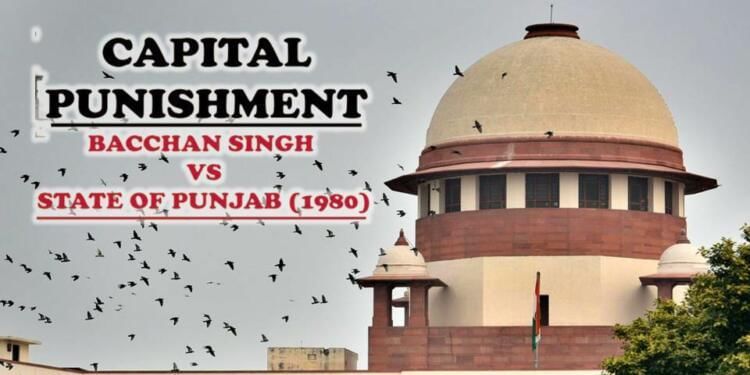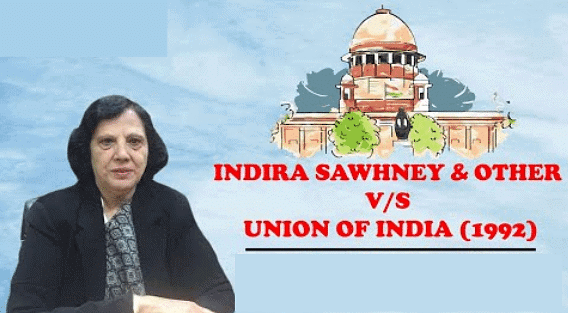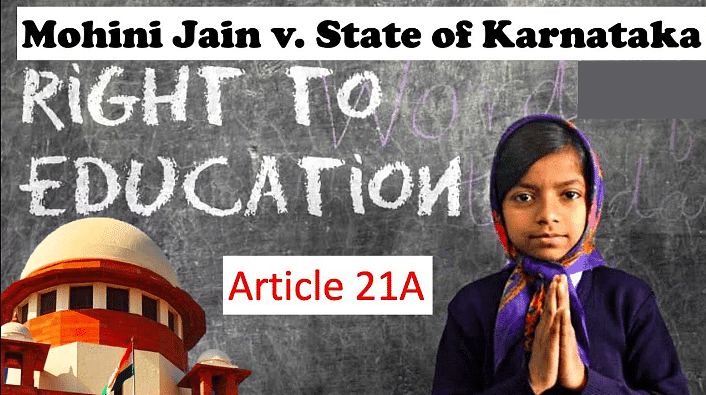Laxmikant Summary: Landmark Judgements and Their Impact- 2 | Indian Polity for UPSC CSE PDF Download
11. Maneka Gandhi Case (1978)
- Name of the Case: Maneka Gandhi vs. Union of India
- Year of Judgement: 1978
- Popular Name: Personal Liberty case
- Related Topic/Issue: Procedure established by law
- Related Article/Schedule: 21
Supreme Court Judgement
The Supreme Court overruled its previous judgement in the A.K. Gopalan case (1950) and declared section 10(3)(c) of the Passport Act (1967) as not violating Articles 14, 19(1)(a) or (g), and 21, and thus, valid. However, it established the following propositions: (a) Articles 14, 19, and 21 are not mutually exclusive, meaning a law depriving a person of 'personal liberty' must stand the test of all three articles; (b) The expression 'personal liberty' in Article 21 is broad, covering various rights constituting personal liberty, some elevated to the status of distinct fundamental rights under Article 19; (c) The right to life under Article 21 includes aspects that make life meaningful, complete, and worth living, encompassing the right to live with human dignity; and (d) The expression 'procedure established by law' in Article 21 requires that the procedure prescribed by law must be just, fair, and reasonable, adhering to the principles of natural justice.

Impact of the Judgement
By adopting a broader interpretation of Article 21, this judgement had several implications: (i) It introduced the American concept of 'due process of law' into Indian judicial interpretation; (ii) It firmly established the 'golden triangle' rule, emphasizing the interrelation of Articles 14, 19, and 21; and (iii) It expanded the scope of Article 21, paving the way for declaring numerous rights as integral parts of Article 21 in subsequent cases.
12. Bachan Singh Case (1980)
- Name of the Case: Bachan Singh vs. State of Punjab
- Year of Judgement: 1980
- Popular Name: Constitutional validity of death penalty
- Related Topic/Issue: 19 & 21
- Related Article/Schedule: Constitutional validity of death penalty
Supreme Court Judgement
The Supreme Court ruled that the provision of death penalty (capital punishment) in Section 302 of the Indian Penal Code, as an alternative punishment for murder, is not unreasonable. Therefore, this provision does not violate the letter or ethos of Article 19. The court emphasized that Article 19(1) does not guarantee the activity of committing a murder. Additionally, it held that the provision of death penalty does not violate Article 21, recognizing the state's right to deprive a person of life or personal liberty with a fair, just, and reasonable procedure established by valid law. However, the court emphasized that death penalty for murder should be an exception rather than the rule, limited to the 'rarest of rare cases' when the alternative option is unquestionably foreclosed. The exceptional and grave circumstances of both the crime and the criminal should be considered while making the choice of death penalty.

Impact of the Judgement
This judgement laid down the doctrine of the 'rarest of rare cases' for awarding the death penalty, influencing subsequent Supreme Court judgements in various cases.
13. Minerva Mills Case (1980)
- Name of the Case: Minerva Mills vs. Union of India
- Year of Judgement: 1980
- Popular Name: Basic structure of the constitution
- Related Topic/Issue: 31C & 368
- Related Article/Schedule: Basic structure of the constitution
Supreme Court Judgement
The Supreme Court invalidated Clauses (4) and (5) of Article 368, inserted by the 42nd Amendment Act (1976), and declared the amendment made to Article 31G by the same act as unconstitutional. The Court stated that these changes destroyed the basic structure of the constitution. It emphasized the limited power of Parliament to amend the constitution, the importance of judicial review, and the harmony and balance between fundamental rights and directive principles as basic features of the constitution.

Impact of the Judgement
This judgement nullified the attempt to dilute the doctrine of the basic structure by the 42nd Amendment Act (1976). The Supreme Court clarified that Parliament cannot, under Article 368, expand its amending power to acquire the right to repeal or abrogate the constitution or destroy its basic features. The judgement also highlighted that anything disrupting the balance between fundamental rights and directive principles undermines an essential element of the basic structure of the constitution.
14. Waman Rao Case (1980)
- Name of the Case: Waman Rao vs. Union of India
- Year of Judgement: 1980
- Popular Name: Judicial review of the ninth schedule
- Related Topic/Issue: 368 & Ninth Schedule
- Related Article/Schedule: Judicial review of the ninth schedule

Supreme Court Judgement
The Supreme Court ruled that all amendments to the constitution made before 24 April 1973, affecting the Ninth Schedule by the inclusion of various Acts and Regulations, are valid. However, amendments made after 24 April 1973 are subject to challenge if they exceed the constituent power of Parliament, as they may harm the basic structure of the Constitution. In simpler terms, amendments adding to the Ninth Schedule after 24 April 1973 are valid only if they do not undermine the basic structure of the constitution.
15. Shah Bano Case (1985)
- Name of the Case: Mohd. Ahmed Khan vs. Shah Bano
- Year of Judgement: 1985
- Popular Name: Maintenance of a divorced Muslim wife
- Related Topic/Issue: Maintenance of a divorced Muslim wife
- Related Article/Schedule: Not specified
Supreme Court Judgement
The Supreme Court affirmed the decision of the High Court of Madhya Pradesh, stating that a Muslim husband is obligated to provide maintenance to the divorced wife beyond the iddat period. It emphasized the secular nature of Section 125 of the Code of Criminal Procedure, 1973, asserting its applicability to all religions and communities. The court held that this section takes precedence over personal laws in case of a conflict, and the payment of Mahr (dower) does not exempt a Muslim husband from providing maintenance to the divorced wife. Additionally, it highlighted the potential benefit of a uniform civil code for national integration by eliminating conflicting legal loyalties.

Impact of the Judgement
This judgement resulted in the enactment of the Muslim Women (Protection of Rights on Divorce) Act, 1986, which reversed the ruling by permitting maintenance payment to a divorced wife only during the iddat period. In the Danial Latifi case (2001), the Supreme Court upheld the constitutional validity of this Act but affirmed that a Muslim husband remains liable to provide maintenance to the divorced wife even after the iddat period.
16. D.C. Wadhwa Case (1986)
- Name of the Case: D.C. Wadhwa vs. State of Bihar
- Year of Judgement: 1986
- Popular Name: Ordinance-making power of the Governor
- Related Topic/Issue: Ordinance-making power of the Governor
- Related Article/Schedule: Article 213
Supreme Court Judgement
The Supreme Court highlighted that between 1967-1981, the Governor of Bihar promulgated 256 ordinances, and these were continually kept in force for periods ranging from 1 to 14 years through re-promulgation. The court emphasized that the extraordinary power under Article 213 should not serve as a substitute for the legislative authority of the State Legislature. It ruled that such a practice would amount to a 'subversion of the democratic process' and a 'fraud on the constitution.' The court stated that the ordinance-making power is intended for addressing extraordinary situations and should not be misused for 'political ends.' Consequently, it declared the re-promulgated Bihar Intermediate Education Council Ordinance, 1985, as unconstitutional and invalid.

Impact of the Judgement
This judgement unequivocally exposed the potential misuse of the ordinance-making power by the executive government.
17. M.C. Mehta Case (1986)
- Name of the Case: M.C. Mehta vs. Union of India
- Year of Judgement: 1986
- Popular Name: Oleum Gas Leak case
- Related Topic/Issue: Power of the Supreme Court to award compensation
- Related Article/Schedule: Articles 21 & 32
Supreme Court Judgement
The Supreme Court ruled that its power under Article 32 is not only preventive but also remedial, allowing relief against a breach of a fundamental right already committed. It clarified that this remedial power may include the authority to award compensation in appropriate cases. The court emphasized that the infringement of the fundamental right must be gross and patent, indisputable, and glaring on the face of it. It stated that instant applications for compensation are maintainable under Article 32 for the enforcement of the fundamental right to life enshrined in Article 21.

Impact of the Judgement
This judgement expanded the scope of Environmental Law in the country and introduced the principle of absolute liability (no-fault liability) in place of the earlier strict liability principle.
18. Kihoto Hollo Han Case (1992)
- Name of the Case: Kihoto Hallohan vs. Zachillhu
- Year of Judgement: 1992
- Popular Name: Defection case
- Related Topic/Issue: Validity of anti-defection law
- Related Article/Schedule: Article 368 & Tenth Schedule

Supreme Court Judgement
The Supreme Court declared paragraph 7 of the Tenth Schedule (inserted by the 52nd Amendment Act, 1985) unconstitutional for violating the provision under Article 368(2). It held that paragraph 7 needed ratification by at least half of the State Legislatures to exclude the jurisdiction of the Supreme Court under Article 136 and the High Courts under Article 226. However, the court upheld the validity of the remaining part of the Tenth Schedule.
19. Indra Sawhney Case (1992)
- Name of the Case: Indra Sawhney vs. Union of India
- Year of Judgement: 1992
- Popular Name: Mandal case
- Related Topic/Issue: Reservation for OBCs in government jobs
- Related Article/Schedule: Article 16
Supreme Court Judgement
The Supreme Court upheld the validity of the executive order providing 27% reservation of jobs to the OBCs under Article 16(4), with conditions such as the exclusion of the creamy layer, no reservation in promotions, maximum reservation not exceeding 50%, a ceiling of 50% on reservation in backlog vacancies, and no relaxation in qualifying marks for promotions. However, it invalidated another executive order that provided 10% additional reservation for economically backward sections not covered by existing reservation schemes.

Impact of the Judgement
This judgement resulted in several outcomes, including the appointment of the Ram Nandan Committee to identify the creamy layer among OBCs, the establishment of the National Commission for OBCs to address complaints of under-inclusion or non-inclusion, and the enactment of five amendment acts. These acts addressed various aspects such as placing the Tamil Nadu reservation act in the Ninth Schedule, nullifying the ruling on reservation in promotions, nullifying the ruling on backlog vacancies, providing relaxations in qualifying marks for reservations in promotions, and establishing consequential seniority for SCs and STs in matters of promotion due to the rule of reservation.
20. Mohini Jain Case (1992)
- Name of the Case: Mohini Jain vs. State of Karnataka
- Year of Judgement: 1992
- Popular Name: Capitation Fee case
- Related Topic/Issue: Right to education
- Related Article/Schedule: Articles 21 & 41
Supreme Court Judgement
The Supreme Court ruled that the right to education is a fundamental right under Article 21, extending to all levels, including professional education like engineering and medicine. It emphasized that the right to life and individual dignity cannot be ensured without the right to education. The court declared that the state is constitutionally mandated to provide educational institutions at all levels and charging capitation fees for admission is a patent denial of a citizen's right to education, violating Article 14. The concept of "teaching shops" was deemed contrary to the constitutional scheme.

Impact of the Judgement
This judgement set the foundation for the later Unni Krishnan case (1993), leading to the enactment of the 86th Amendment Act (2002). The Supreme Court, in the Unni Krishnan case, partly upheld and partly overruled the Mohini Jain judgement, addressing concerns raised by state governments and laying the groundwork for educational reforms.
|
151 videos|780 docs|202 tests
|
FAQs on Laxmikant Summary: Landmark Judgements and Their Impact- 2 - Indian Polity for UPSC CSE
| 1. What was the significance of the Maneka Gandhi Case (1978)? |  |
| 2. What was the outcome of the Shah Bano Case (1985)? |  |
| 3. How did the Bachan Singh Case (1980) impact the death penalty in India? |  |
| 4. What was the significance of the Indra Sawhney Case (1992)? |  |
| 5. How did the Mohini Jain Case (1992) influence educational fees and admissions in India? |  |
















